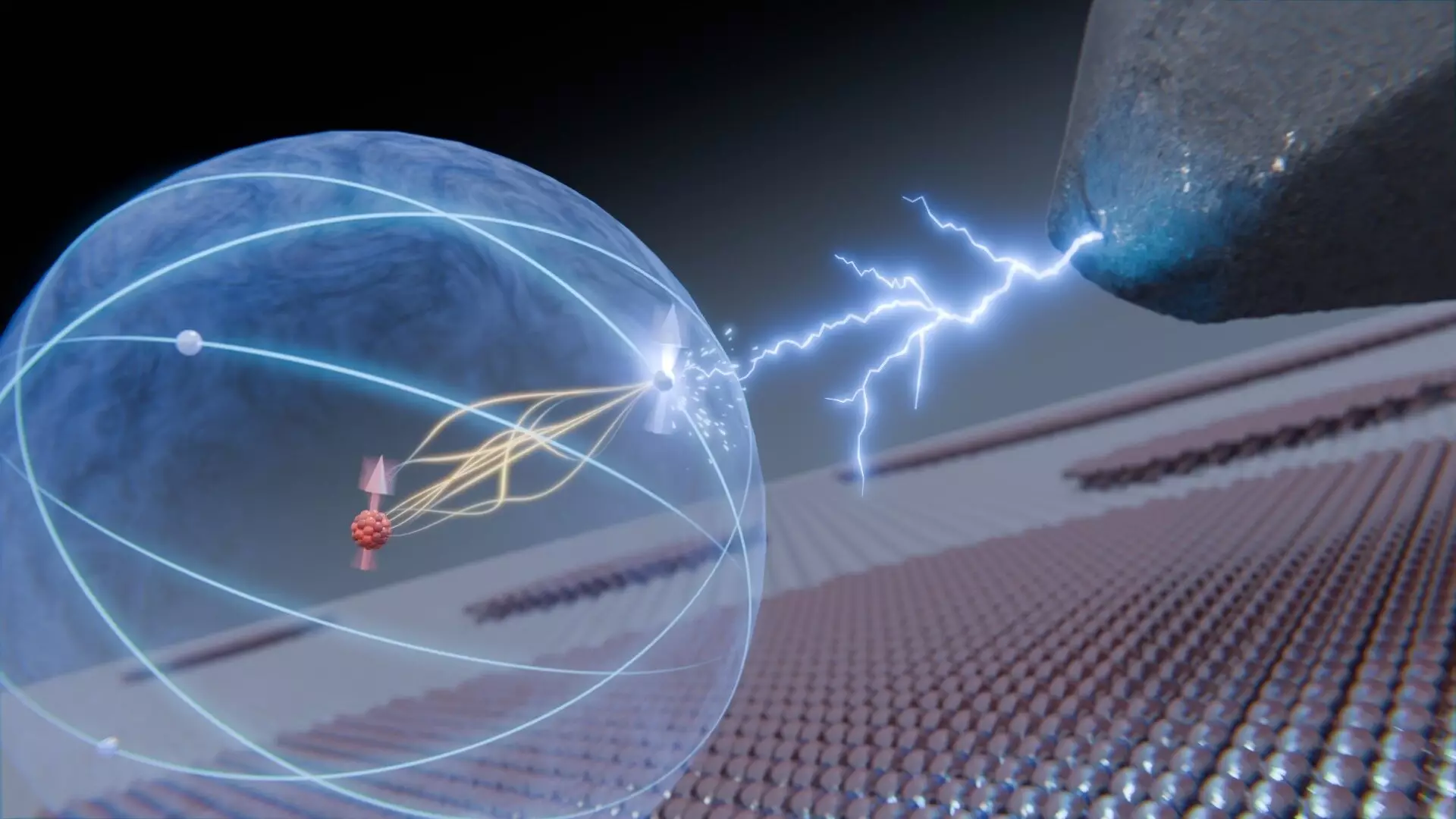A team of scientists from Delft University of Technology recently achieved a remarkable breakthrough in quantum physics by successfully manipulating the movement within the nucleus of a single atom. This innovative study highlights the intricate relationship between atomic nuclei and their surrounding electrons, a dynamic that has far-reaching implications for quantum information storage and processing technologies. The findings, outlined in a recent publication in *Nature Communications*, shed light on the prospects of harnessing the nucleus for stable quantum data storage, which can potentially revolutionize the field of quantum computing.
The researchers dedicated several weeks to studying a particular isotope of titanium, specifically the Ti-47 atom. Unlike its more prevalent counterpart, Ti-48, the Ti-47 nucleus possesses one fewer neutron, imparting a unique magnetic quality to it. This phenomenon is described by the concept of “spin” in quantum mechanics, essentially functioning like a miniature compass that can align in various orientations. The specific orientation of this spin ultimately encodes quantum information, providing scientists with a means of manipulating and understanding the atomic fabric of matter.
One intriguing aspect of the research pertains to the hyperfine interaction—a minute effect that enables the nuclear spin to be influenced by the electron spins. According to Lukas Veldman, who played a pivotal role in the study, these interactions are so faint that they necessitate a finely tuned magnetic field to produce noteworthy results. This exacerbates the complexity of the research, emphasizing the delicate balance required to observe and manipulate such minute atomic behaviors.
During the experiments, the researchers utilized a voltage pulse to disrupt the equilibrium of the electron’s spin momentarily. Subsequently, both the electron and nuclear spins began to oscillate in unison for a fleeting fraction of a microsecond—exactly as formulated by Schrödinger’s theoretical predictions. Veldman’s own calculations astonishingly aligned with the observed data, establishing a robust correlation between theory and experimental reality. This consistency is critical; it suggests that the nuclear spin can preserve quantum information without succumbing to disruptive environmental factors.
The implications of this research extend well beyond mere academic curiosity. The nuclear spin’s resilience against environmental disturbances positions it as a formidable candidate for reliable quantum information storage solutions. With further exploration and development, this pioneering work could pave the way for advancements in quantum computing and secure data storage. However, the driving motivation for these researchers transcends practical applications; as Otte eloquently states, their work allows humanity to exert influence over the fundamental states of matter at a minuscule scale, showcasing the profound interconnectedness of research and existential inquiry.
This study not only serves as a testament to human ingenuity but also opens up a meaningful dialogue about the future of quantum technology and the unexplored realms of atomic interactions. The ongoing quest to manipulate atomic systems continues to captivate scientists, leading us toward a deeper understanding of the universe’s fabric and the possibilities therein.

